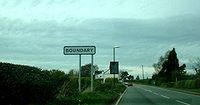20.109(F08): Mod 3 Day 2 Phage nanowires
Introduction
The metal iridium has an interesting history as much for the things it hasn���t done as for the things it has. As one of the most corrosion-resistant metals known, it was forged with platinum into the bar that stood for years as the meter standard. In addition, iridium is one of the most brittle materials known, making it a suitable hardening agent for that platinum meter bar but also making pure iridium nearly impossible to machine. Finally, iridium is awfully hard to get unless you catch space dust. It is thought to be concentrated in the earth���s molten core but is only rarely found in the earth���s crust. Interestingly, there is a 30-fold enriched for iridium in the layer of clay that marks the end of the planet���s Cretaceous period. This enrichment led the father and son team of Luis and Walter Alvarez to suggest in the 1970s that the dinosaurs died when a giant asteroid struck the earth, releasing an iridium-dense cloud that blocked the sunlight before settling over time. The enrichment of iridium in this clay layer could also be explained by a massive volcanic eruption (or series of them) that released iridium from the molten core. When Jurassic Park opens for real, perhaps there will be a way to find out from the dinosaurs themselves how the iridium came to rest in this clay layer.
The name iridium is derived from the latin word for rainbow, iris, and it���s the colorful properties of this uncorrosive, unmachinable, dinosaur killing metal that���s relevant for our work in this module. Iridium, when oxidized to IrO2, has a d-orbital conductance band [1] rather than the usual s or p-orbital band that is associated with other oxides, such as indium tin oxide (ITO). The populated d-orbital makes this chemical species electrochromic, that is it will change color from purple to colorless when charge is applied. The particular usefulness of IrO2 over other inorganic electrochromic oxides is its switch speed, which is on the order of 10 msec for sputtered IrO2. And while faster switch speeds and greater contrast may be needed for future applications such as electronic paper [2], nature has given a good starting substrate to optimize.
One optimization strategy is to organize the IrO2 into crystals. Such a nanoscale highly ordered structure could improve the natural switch speed. Growing crystals in the lab requires as much art as it does skill. This is because odds are very low that two molecules might collide with the precise energy needed to nucleate the crystal formation and only select conditions enable crystals to grow from that newly formed nucleus. Think of that on the next snowy day. In this lab, we'll use M13 as a template to order the iridium colloidal particles that you're synthesizing. The ordered and polyvalent p8 coat protein provides ~900 nm of real estate for ordered iridium binding to occur. You will have the opportunity to visualize the phage-IrOx crystals by TEM during a lab period later in this module.
Protocols
Part 1: Complete the IrOx synthesis
In these final steps of the synthesis you will remove the unreacted citrate using an ion exchange resin and then oxidize the iridium particles with H2O2.
- Stir your solution from last time with 2.8 grams of ion-exchange resin ("Amberlite" monobed MB-1) for 30 minutes at room temperature.
- Use a vacuum filtration unit to remove the resin.
- Dilute the filtered volume to 50 ml with deionized water.
- Return the filtered volume to your 120 ml amber bottle and add 1.4 ml of 6% H2O2 (do not accidentally use the 30% stock).
- Stir for one more hour at room temperature.
- These will rest until next time at room temperature in the dark in the amber bottles to allow for complete decomposition of the hydrogen peroxide.
Part 2: Dilute the 3-12 phage stock
Count the number of plaques on your phage titering plates from last time. Calculate the concentration of phage in your undiluted purified phage sample. Be sure to take into account each dilution when you try this calculation. Express the concentration as PFU/ul and determine the volume of phage needed for 2x10^13 PFU. You will need to know this volume for Mod3 Day 5.
Part 3: Research proposal/Collaborative Science and Art Project
For those interested in the research proposal
Writing a research proposal requires that you identify an interesting topic, spend lots of time learning about it, and then design some clever experiments to advance the field. It also requires that you articulate your ideas so any reader is convinced of your expertise, your creativity and the significance of your findings, should you have the opportunity to carry out the experiments you���ve proposed. To begin you must identify your research question. This may be the hardest part and the most fun. Fortunately you started by finding a handful of topics to share with your lab partner. Today you should discuss and evaluate the topics you���ve gathered. Consider them based on:
- your interest in the topic
- the availability of good background information
- your likelihood of successfully advancing current understanding
- the possibility of advancing foundational technologies or finding practical applications
- if your proposal could be carried out in a reasonable amount of time and with non-infinite resources
It might be that not one of the topics you���ve identified is really suitable, in which case you should find some new ideas. It���s also possible that through discussion with your lab partner, you���ve found something new to consider. Both of these outcomes are fine but by the end of today���s lab you should have settled on a general topic or two so you can begin the next step in your proposal writing, namely background reading and critical thinking about the topic.
A few ground rules that are 20.109 specific:
- you should not propose any research question that has been the subject of your UROP or research experience outside of 20.109. This proposal must be original.
- you should keep in mind that this proposal will be presented to the class, so try to limit your scope to an idea that can be convincingly presented in a ten minute oral presentation.
Once you and your partner have decided on a suitable research problem, it���s time to become an expert on the topic. This will mean searching the literature, talking with people, generating some ideas and critically evaluating them. To keep track of your efforts, you should start a wiki catalog on your OpenWetWare user page. How you format the page is up to you but check out the |���yeast rebuild��� or the | ���T7.2��� wiki pages on OpenWetWare for examples of research ideas in process. As part of your ���for next time assignment��� you will have to print out your wiki page specifying your topic, your research goal and at least five helpful references that you���ve read and summarized.
For those interested in collaborating on The Grafting Parlor
The collaborating artists for "The Grafting Parlour," namely Kelly Andres, Nurit Bar-Shai and Lucy Hg will be coming to the lab on November 13th from noon -1PM to brainstorm about what science material might be good to broadcast for later conferences. Your conversation with them will be remotely accessed by artists in Dublin and the screen may include the conversation as well as some video exchange with the bacteria. Your ideas and exchanges with them should be rewarding and help you shape your ideas for an exhibit that reflects your interests. You should use your time today to organize your thoughts and react to their initial ideas and questions, posed here:
- Inter-species communication
- One way : how can you talk to bacteria? If you could talk to bacteria, what would you say?
- Two way: is there a way for people to direct the growth of bacteria by SMS? what is the human-bacteria relationship, and how do we build upon it? OR can we enhance exchanges between or about different kinds of bacteria?
- A portal to connect MIT and your exhibit to the northernmost forest of Finland, where people can talk to trees and peer at brightly colored bacteria in the arctic ice
- Going green
- Can photo-reactive yeast be a light bulb? Perhaps yeast could be adhered to a light bulb and programmed to react in a visible way to changes in planetary health (i.e. CO2), or to population density (more people in the room makes the cells glow brighter)?
- Can we reverse the energy cycle - bacteria, loose electrons, and electricity (a little poetic license!)?
- Biology at play
- If bacteria were play-do, what would you sculpt?
- If yeast were building blocks, what would you build?
These are offered by the artists as conversation starters. Where you actually go with this opportunity is your call. If it's feasible, your project may be included in the following exchange opportunities:
ISEA pre-symposium, November 13, 2008: A Citizen���s Call to Synthesize! a creative conversation with science on public participation in the laboratory
Lightwave 2009, January 24 ��� February 21, 2009: Growing Light and Other Conversations, inter-species communication and illumination
Greece Biennale at the State Museum of Contemporary Art in Thessaloniki, May, 2009: Presenting with e-MobiLArt
Academy of Fine Arts in Poland, Autumn, 2009: Presenting with e-MobiLArt
DONE!
For next time
- If you'll be giving a presentation next time, please email a completed .ppt presentation to nkuldell or astachow AT mit DOT edu. The order of presentation will be determined by the order in which we receive the completed presentations. Also, once you have given your presentation, you should email your instructor again naming/describing 2 things you felt you did well during your presentation and 2 things you feel you can work on. This will be a 2 point FNT assignment that is assigned here to count as Mod 3 Day 3 homework.
- Define your research proposal or exhibit ideas by making a wiki page to collect your thoughts and resources (you can do this on one page with your partner or split the effort and each turn in an individual page).
If you are planning a research proposal, keep in mind that your presentation to the class will need:
- a brief project overview
- sufficient background information for everyone to understand your proposal
- a statement of the research problem and goals
- project details and methods
- predicted outcomes if everything goes according to plan and if nothing does
- needed resources to complete the work
If you are planning to work on a playful, informative exhibit, then you will present:
- a description of existing ways the public can interact with science (and/or) how a new model for an interactive laboratory can fit into the history of science and knowledge (and/or) your ideas about citizenship and biological engineering
- a statement of the exhibit's goal(s) and a summary of your planned exhibit, assuming your work is fully successful
- a detailed plan for the exhibit, including (1) a high level "system summary" or "timing diagram", and (2) a list of "parts" or "devices," i.e. a list of DNA functions, that you'll need to find/clone/synthesize
- a detailed plan for the laboratory, including (1) first experimental steps that will be needed and (2) a measurement or control experiment you'll perform to assess how well your exhibit is working. You must include hypothetical data for the measurement or control, explicitly describing what values or outcome you'd expect a working and a non-working system.
- needed resources to complete the work
- societal impact if all goes well
You can organize your wiki page along these lines or however you feel is most helpful. Print your user page(s) for next time, making sure it defines your topic, your idea and some references you've collected and summarized.
Reagents list
Ion Exchange Resin (Amberlite Sigma 501999)
30% Hydrogen Peroxide (VWR VW3742-1)


